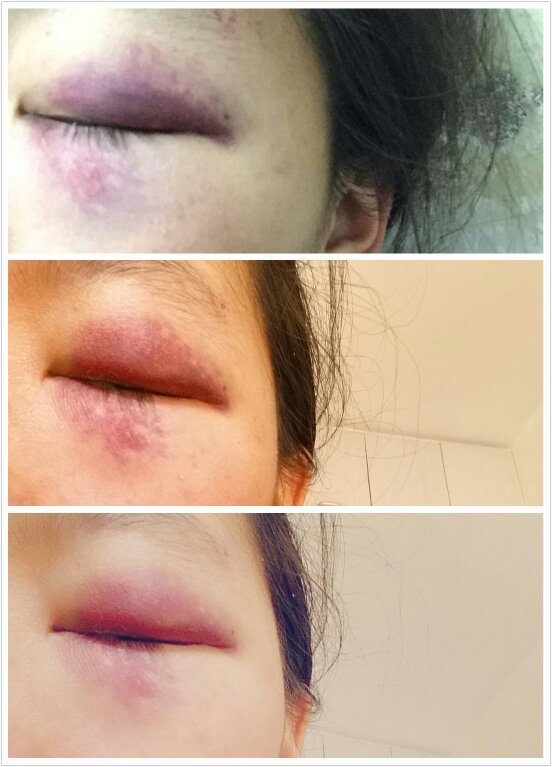
The Real Reason Behind These Common Bruises Will Shock You…
You’re putting on your favorite cardigan when you notice it—a purplish-blue blotch on your forearm. You stop and think. Did I bump into the doorframe? Maybe I knocked against the kitchen counter? You shrug it off. It’s just a bruise. At your age, they seem to appear like uninvited guests, mysterious but mostly harmless.
Most of the time, that’s exactly what they are. But what if your body is trying to tell you something more? What if certain bruises are like tiny warning flags, signaling something that needs your attention? The real reason behind them might be more surprising—and important—than you think.
As we navigate our 50s, 60s, and beyond, our relationship with our bodies changes. We become wiser, but we also become more vulnerable to dismissing real symptoms as “just part of getting older.” Learning the difference is a crucial skill. Let’s decode the mystery of the common bruise.
The “I Don’t Remember Bumping Anything” Bruise
This is the most common concern. You find a sizable bruise on your thigh or torso with absolutely no memory of an injury. It’s easy to chalk it up to a clumsy moment you forgot, but if this happens frequently, it’s your body’s way of waving a yellow flag.
The Shocking Reason: While thin skin and fragile capillaries are part of normal aging, easy and frequent bruising can be a sign of a low platelet count. Platelets are tiny cells in your blood that form clots to stop bleeding. If your count is low, even minor pressure can cause significant bleeding under the skin. This condition, called thrombocytopenia, can be caused by medications, autoimmune disorders, or issues with bone marrow production. It’s your body’s way of saying the internal repair crew is short-staffed.
The “Big and Sore” Bruise
Some bruises aren’t just colorful; they’re large, tender to the touch, and seem to take forever to heal. They might even feel slightly raised or firm.
The Shocking Reason: This could signal a deeper hematoma—a larger collection of blood—that may need medical attention. More importantly, it can indicate a problem with your body’s clotting factors. Your blood contains proteins that work in a precise chain reaction to form a clot. If one of these factors is deficient or not working properly (as in conditions like hemophilia or von Willebrand disease, which can be diagnosed later in life), the bleeding is harder to control, leading to larger, more painful bruises.
The Tiny, Pinpoint Red Dots (Petechiae)
These aren’t bruises in the classic sense, but they are a close relative and a major red flag. They look like a rash of tiny, red or purple pinpricks that don’t fade when you press on them. They often appear on the ankles, legs, or elsewhere.
The Shocking Reason: Petechiae are a classic sign of leaking capillaries, often due to very low platelet levels. This is a more urgent finding than a typical bruise. It’s like your blood vessels are springing tiny leaks. This can be associated with serious infections, violent coughing or vomiting, or blood disorders. If you see these, it’s time to call your doctor promptly.
The Bruise That Accompanies Other Symptoms
This is the most critical category. A bruise alone might be one thing, but a bruise that shows up with other symptoms is a powerful clue.
Pay attention if you also experience:
- Excessive bleeding: Your gums bleed heavily after brushing, you have frequent nosebleeds, or a small cut takes forever to stop bleeding.
- Unexplained fatigue: You feel profoundly tired, weak, or short of breath.
- Fever or night sweats.
The Shocking Reason: This combination can point to conditions that need immediate diagnosis. It could indicate liver disease (the liver produces many clotting factors), kidney disease, or, in some cases, blood cancers like leukemia. Your body is using multiple signals to get your attention because the internal issue is systemic.
The Medication Connection: The Hidden Culprit
Before you jump to the worst conclusion, there’s a very common and often overlooked reason for bruising: your medicine cabinet.
Many widely used medications can increase bruising by thinning the blood or affecting platelet function. These include:
- Blood Thinners: Medications like warfarin (Coumadin), clopidogrel (Plavix), and aspirin are designed to make bruising and bleeding easier.
- Over-the-Counter Pain Relievers: Nonsteroidal anti-inflammatory drugs (NSAIDs) like ibuprofen (Advil, Motrin) and naproxen (Aleve) can also promote bruising.
- Corticosteroids: Long-term use, whether oral or topical, can thin the skin, making it more fragile.
- Dietary Supplements: Fish oil, ginkgo biloba, and vitamin E have a mild blood-thinning effect.
Important: Never stop taking a prescribed medication without talking to your doctor. Instead, have a conversation about the bruising you’re experiencing.
What You Can Do: Your Action Plan
- Don’t Ignore the Pattern: One mysterious bruise is likely nothing to worry about. A pattern of frequent, large, or unexplained bruising, especially with other symptoms, is your cue to act.
- See Your Doctor: Make an appointment. Your doctor will ask about your medical history, medications, and conduct a physical exam.
- Simple Tests Can Help: A complete blood count (CBC) can check your platelet levels. Other blood tests can assess your liver and kidney function and measure how long it takes your blood to clot.
- Practice Safety: As we age, preventing injury is key. Keep walkways clear, use night lights, and wear protective gloves when gardening.
Your body has a remarkable way of communicating with you. Those common bruises are part of that language. Learning to listen—to distinguish between a harmless mark and a serious signal—is one of the most powerful things you can do for your health. It’s not about living in fear; it’s about living with awareness. So the next time you see a bruise, take a closer look. The real reason behind it could be the most important message you receive all year.